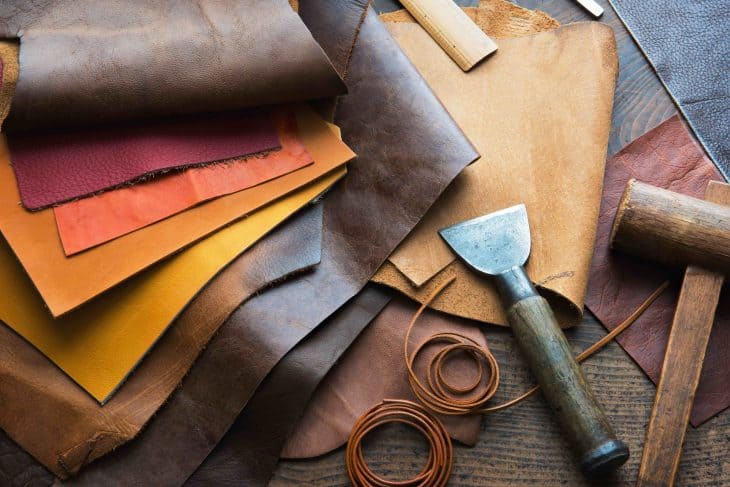
You might be in the market for a leather jacket, leather shoes, or even a leather couch. Handbags, belts, and other accessories also often come in leather material. However, it isn’t always easy choosing what to get because of all the different types of leather.
For instance, there are types of leather based on authenticity. There are also types of leather based on which animal it came from. There are so many types of leather that it can get overwhelming, but don’t worry as this guide will help you learn and understand each one!
What is leather?
Before anything else is the definition of leather itself. To many, leather is simply a type of hard fabric for clothes or handbags. This description isn’t wrong, but there are more ways to better describe it
Leather is a popular material that people use for all kinds of products. Aside from clothes and accessories, some examples are footballs, car seats, and tents. Its popularity is no surprise as it is a very versatile material. It also gives a stylish look and feel.
How is leather made?
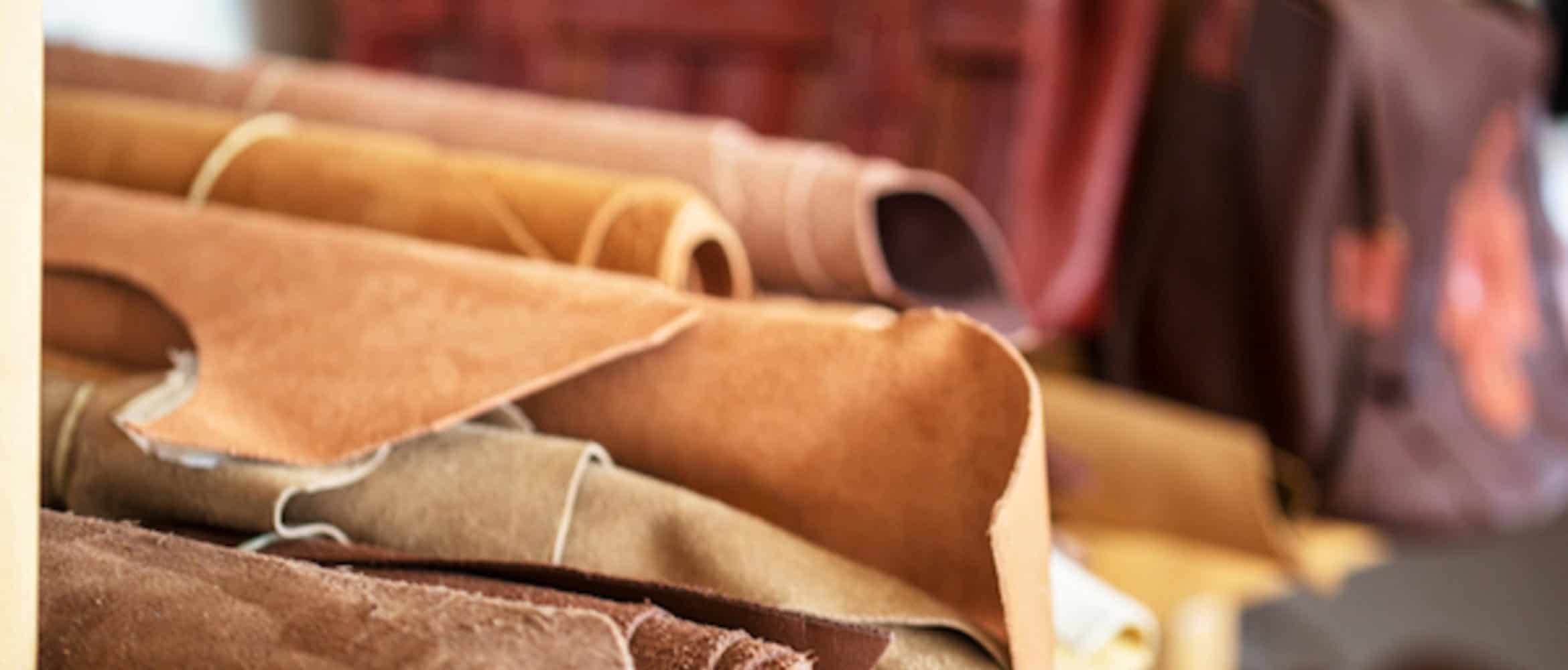
You might be wondering, Where does leather come from? What is leather made of? The answer is simple. Most leather comes from animals. Some of these animals include cows, sheep, and lambs.
When animal skin or hides are processed, the resulting product is leather. The tanning process refers to the chemical process that animal hides go through. In this process, chemical or natural extracts change the hide’s protein structure. This results in the leather fabric, a much stronger and malleable material. After this, people often dye the leather with their desired colors or patterns.
Some properties of leather include being resistant to tearing, poking, slashing, and fires. It also provides good heat insulation. Thus, people sometimes use leather as cup holders and gloves. Another property of leather is its durability. Leather does not decompose like other materials. With proper care, leather can last for a very long time.
What are some other terms to know about?
First, leatherworker refers to someone who works with leather. It is not an easy task, so these people often study and practice for years. Some people also call them leathercrafters.
When shopping for leather, you might hear the terms, “hide,” or “grains.” It might confuse you at first, but they will be easy to understand once you learn what they mean.
Hide refers to the unprocessed skin of animals. Some people use this term interchangeably with leather. However, they are two different materials.
As mentioned above, the tanning process converts animal hide into leather. A tannery refers to the place or factory where the tanning process occurs.
Once the hide becomes leather, it now contains different layers. These layers include the grain, grain and corium junction, corium, and the flesh.
Crafters will cut and sand through these different layers. This then produces different types of leather that people refer to as leather grades.
Some factors that differ between types of leather include appearance, weight, and finish. The strength, thickness, and texture are also different among the types of leather.
Types of Leather Based on Animals
In general, there are two types of leather: artificial and authentic leather. Artificial leather refers to types of leather that are faux or synthetic. On the other hand, authentic leather, or real leather, is an umbrella term for all types of leather made from animal hide.
Thus, the types of leather based on animals are all authentic leather.
Cowhide Leather
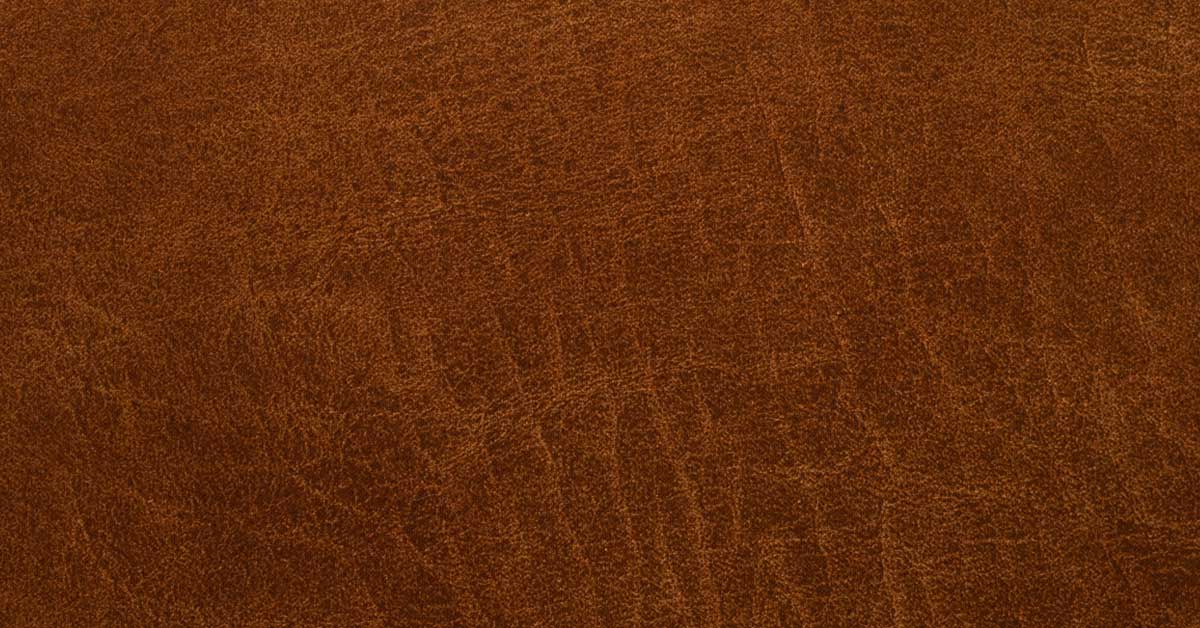
One of the most common types of leather is cowhide leather. Cowhide leather comes from the skin of cows. It is strong and heavy. Because of its thickness, it has greater insulation than most leathers. However, it is not flexible. It is also not that soft.
Because of these factors, manufacturers usually use cowhide leather for wallets and belts. Cowhide leather is also often the go-to for leather jackets. If you see a brown leather jacket that is heavy and hard to fold, then it is probably cowhide leather.
Of course, cowhide leather doesn’t only come in brown. Designers often dye leather fabrics, so cowhide leather can also be black, gray, or maroon.
Sheepskin Leather
Like wool, sheepskin leather comes from the skin of sheep. Unlike most types of leather, sheepskin is soft and light. This leather fabric feels smooth and is also easier to manipulate as it’s easy-fold.
Some common products for sheepskin leather are hats and gloves. Sheepskin leather is resistant to fire and electricity. Thus, sheepskin leather gloves are great for those who want both fashion and function.
Unfortunately, because sheepskin is softer, it is also more prone to breaking down over time. It can easily break when under the right amount of pressure. Because of this, sheepskin leather is not a popular choice for wallets and handbags. Still, small accessories like bracelets and necklaces are often made from this material.
Lambskin Leather
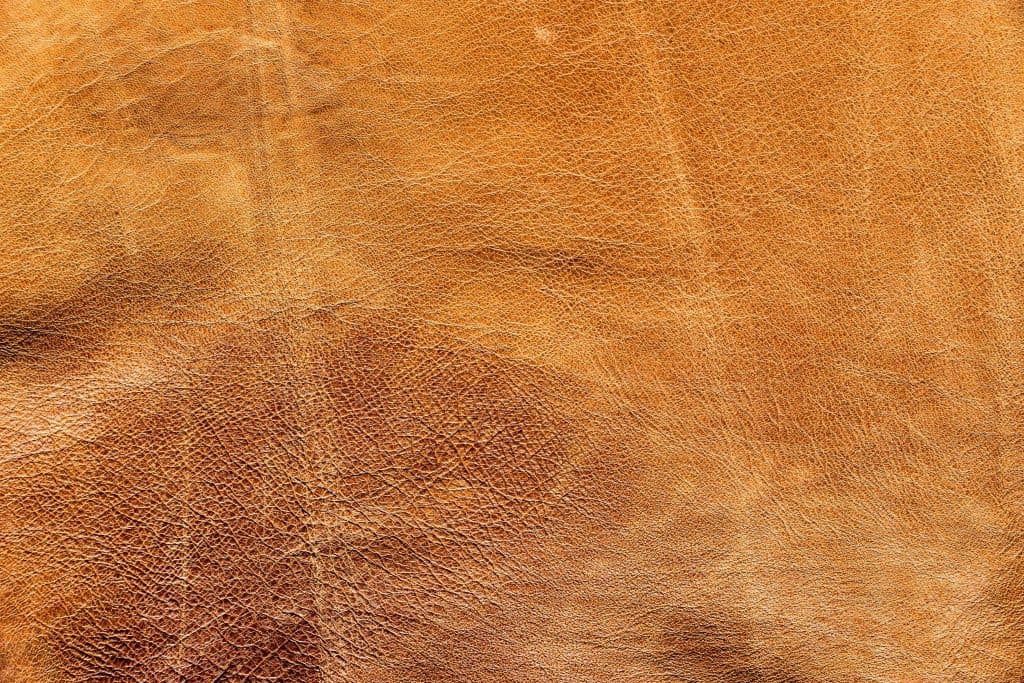
Lambskin leather comes from the skin of lambs. Compared to other types of leather, it offers a great midpoint for all of its factors. It is not too stiff or heavy. Even if it doesn’t offer as much insulation as cowhide does, it offers more than enough on its own.
Among all the types of leather, however, lambskin offers the softest leather. Because of this, lambskin leather clothes are often more expensive than other types. It is in great demand and often the go-to for expensive fashion brands.
Another reason it is much more expensive is that lambskin comes from a smaller animal. Lambs provide a smaller hide. Thus, most people only use lambskin for apparel and smaller objects. People do not use this for couches, car seats, or other big items.
Goatskin Leather
Goatskin leather comes from the skin of goats. Compared to other types of leather, it is relatively softer. For instance, goatskin leather is softer than cowhide leather. This is because goatskin leather contains lanolin. Lanolin is a fatty substance found in the wool of sheep and goats. Cowhide does not have this, which is why it is harder than goatskin.
Goatskin leather is also more durable than sheepskin. This makes it a popular choice for bags, wallets, and handbags. Some footwear manufacturers also use goatskin leather for their shoes.
The surface of goatskin leather is not smooth. It is pebbled with ridges that give it a rough and distinctive feel. If you find a leather bag with ridges on its surface, it is most likely goatskin leather.
Calfskin Leather
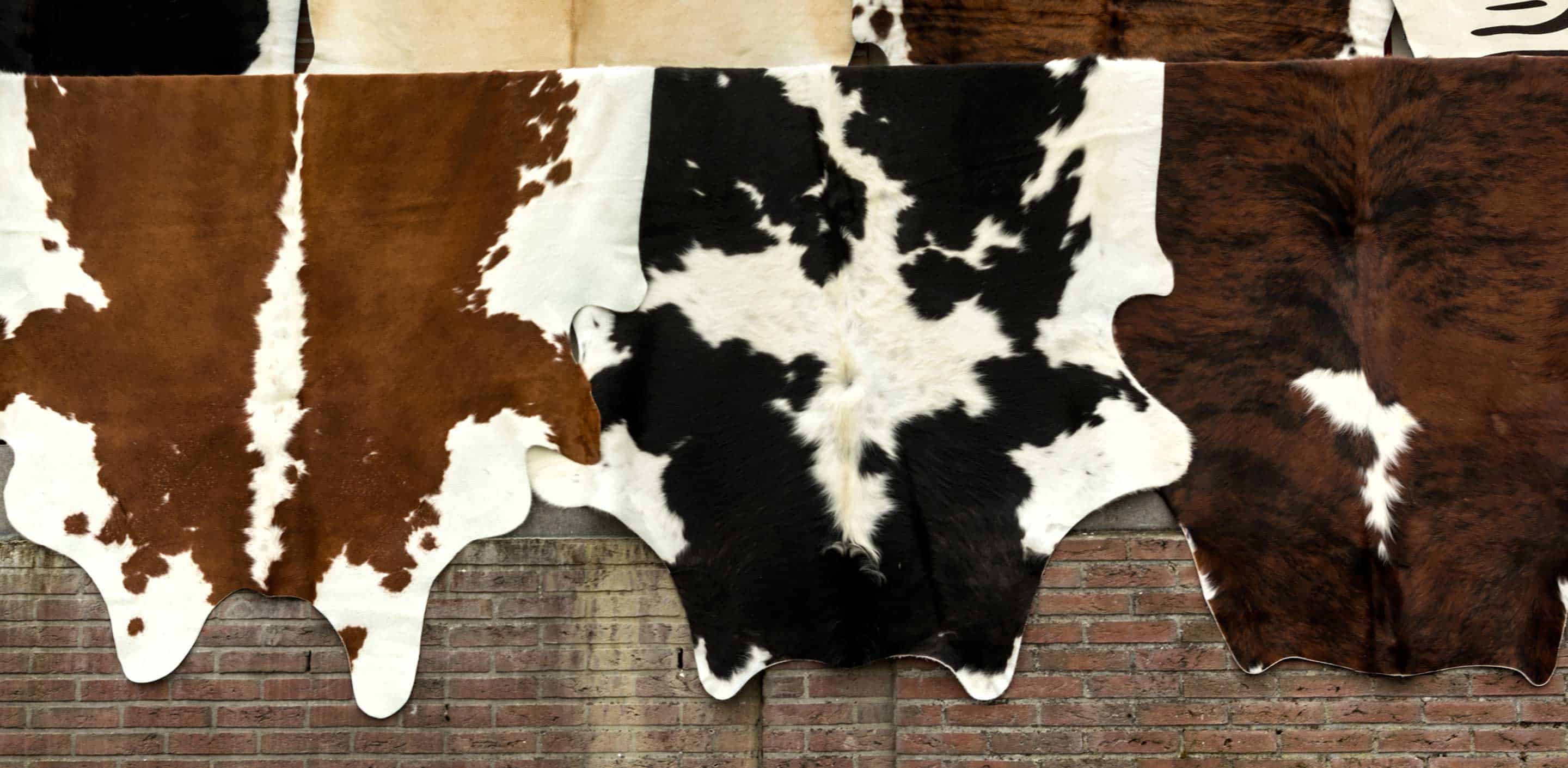
Calfskin leather, or calf leather, comes from the skin of calf or cattle. Calfskin leather is soft and smooth. As it gives off a luxurious feel, this leather type is often expensive.
It is also incredibly similar to lambskin. They are both very soft and durable. What differentiates the two is the tougher feel of calfskin. Also, calfskin is matte. Thus, if you encounter a matte leather jacket, it is likely of calfskin material.
Like other types of leather, calfskin leather is often used for clothes and shoes. Aside from apparel, people also use calfskin leather for book covers. People also use thinner versions of this as parchment for traditional manuscripts.
Buffalo Leather
Another name for buffalo leather is English Saddle Leather. Buffalo leather comes from buffalo hide. Most buffalo leather comes from Asia, where most buffalos are from. There are different types of buffalo leather, depending on what type of buffalo hide it uses. For example, water buffalo leather comes from Asian Water Buffalo hides.
Compared to other types of leather, buffalo leather is much thicker. Its outer layer is three times thicker than cowhide. Thus, buffalo leather is extremely strong yet soft.
Products that often comprise buffalo leather include belts and armor. For expensive movie and theater productions, they might use buffalo leather if their costumes call for it.
Deer Leather
Deer leather comes from the processed hide of deer. An umbrella term for deer leather is buckskin leather.
Deer leather is one of the softest types of leather ever. It offers great insulation and is very durable. Thus, it is often a go-to material for winter gloves. Leather shoes and handbags also use deer leather. Aside from these, sports equipment also makes use of deer leather. Some examples include footballs and protective gears used in martial arts.
Despite its many uses, deer skin is hard to work with. Thus, people rarely use this for objects they mass produce. It can also be much more expensive, so don’t expect deer leather to be budget-friendly.
Leather from Exotic Animals
There are plenty more types of leather based on animal hides. However, most of these animals are exotic. Some examples include alligators, snakes, and sharks. Some people even make leather from armadillos, ostriches, and walruses. Unfortunately, even domestic pets like dogs and rabbits can be used for leather. Because of their hides, these animals are often at risk of extinction. The high demand for leather of exotic animals can cause a decline in their population. Because of this, there are big debates surrounding animal rights and real leather.
Some people believe that manufacturers and designers should stop using animal hides for all types of leather. Meanwhile, some believe that it is okay to use animal hide as long as the animals are not endangered. This is one of the reasons why people came up with fake or synthetic leather. A vegan option helped decrease the demand for authentic leather. Learning about the different types of leather can also help people form their stand about the issue.
Types of Leather Based on Authenticity
Of course, authentic leather is not the only option for people. To some, authentic leather is not even an option at all. Artificial and synthetic leather are also valid types of leather. They are alternatives to those who feel strongly against the production of real leather.
Faux Leather
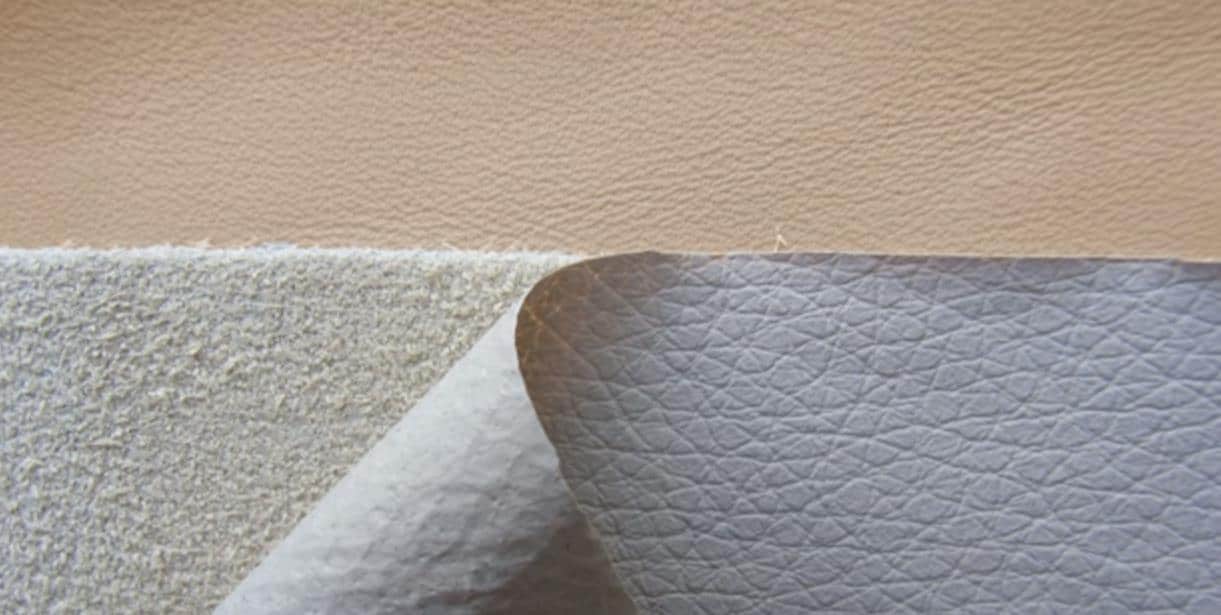
“Faux” is French for “fake.” Thus, the literal translation of faux leather is fake leather. Some also call fake leather “leatherette” or “koskin.” Unlike authentic leather, faux leather uses a fabric base mixed with chemicals such as wax, dyes, and polyurethane. The process turns the fabric into a hard and durable material like real leather.
There are two common types of synthetic leather: PU leather and PVC leather. What is PU leather, you ask? PU, or polyurethane, leather is often material for clothes and apparel. Meanwhile, PVC, or polyvinyl chloride, leather is often used for furniture or covers. For example, books with fake leather covers are usually PVC leather. Another name for PVC leather is vinyl leather.
Protein Leather
This leather type might not be as familiar to people as other types of leather. Protein leather, or “Pleather,” is vegan. Instead of using animal hide, protein leather comes from a mixture of protein powder and resin. At first glance, it can often pass for genuine leather. However, touching it can immediately give away what it really is. Unlike real leather, it also doesn’t have a strong smell. It will either smell like nothing or smell like adhesive or glue.
One of the pros of protein leather is that it is a lot less expensive than real leather. Thus, you can save a lot of money by using protein leather instead. However, protein leather can be difficult to maintain. Cleaners and polishers for authentic leather will often damage synthetic leather. It is also non-porous. This decreases its breathability. Thus, protein leather might not be great for clothes, especially jackets. Car seats and headphones, however, are popular protein leather products.
Types of Leather Based on Finishes
Another way to categorize the types of leathers is by their finishes. When crafters work on leather material, they also do leather finishing. Finishing refers to the final steps that complete the look of the piece. This can include dyeing, priming, and embossing.
Aniline Leather
Another name for aniline leather is “Natural Nappa.” As the name suggests, aniline leather receives the least finishing from crafters. It contains wrinkles and pebbles from the original hide.
If you’re looking for a natural leather look, then the aniline leather is for you. However, there are downsides to little to no finishing. For instance, crafters will not prime aniline leather. It does not have a protective layer against the sun and water. Thus, an aniline leather jacket might not survive long under the sun or rain. Accidents such as spilling water over yourself can also damage your jacket.
If you don’t like high-maintenance possessions, then it is best to look for something else. But you should know that aniline leather is great for those who want the purest leather.
Semi-Aniline Leather
Semi-aniline leather is the answer for those who want the natural leather feel but more durable. Crafters apply more finishing on semi-aniline types of leather. Thus, they often have a layer of primer.
This primer protects the leather from the sun and water. It is also unlikely for colored drinks to stain this leather. This layer of primer also helps remove spots or marks that are often present on aniline leather.
Pigmented Leather
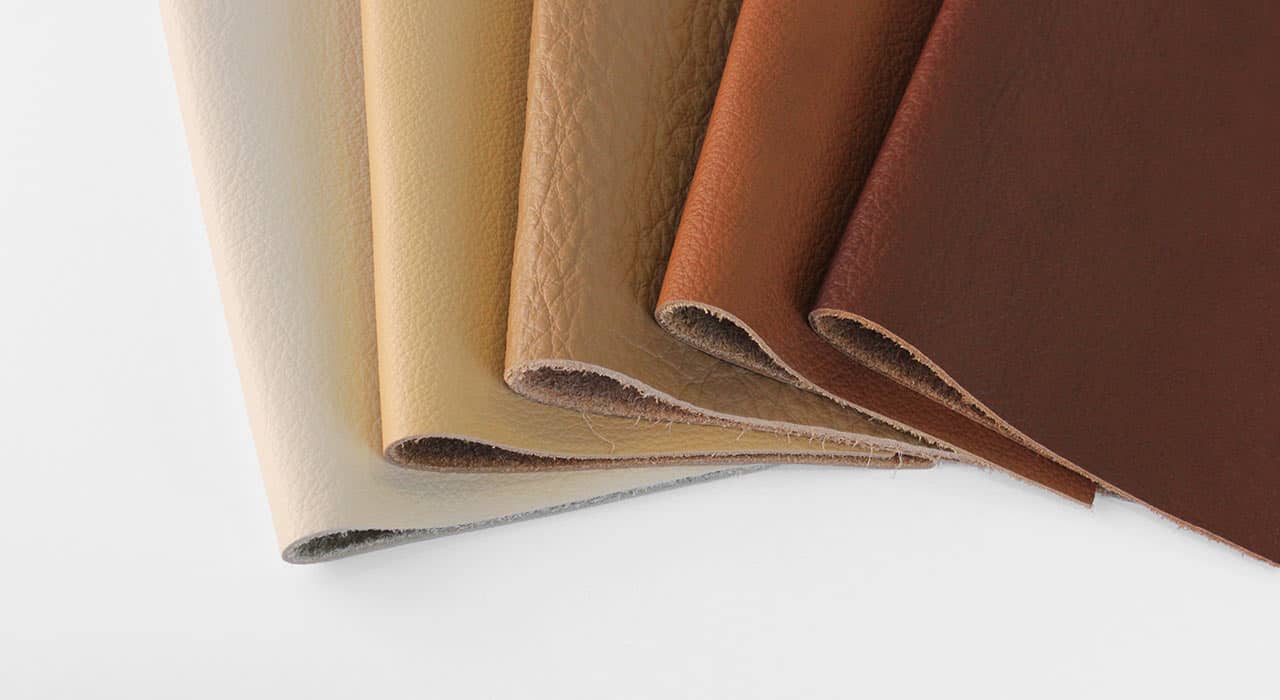
Pigmented leather refers to leather that receives the most finishing. Thus, it undergoes sanding, coloring, and embossing. The leather patterns on pigmented leather are often already artificial.
Still, it is much cheaper than aniline and semi-aniline leather. Thus, crafters use this for large furniture. This includes leather couches, chairs, and other upholstery.
Finished Split Leather
For finished split leathers, crafters work on the middle or lower layers of the hide. They spray this with polymer and emboss it with their designed patterns.
Unlike the other types of leather, this does not use the upper layers of the hide. With that, is not as durable. It can be prone to tearing if enough pressure is applied. Thus, it is not recommended for bags and shoes.
Oily Pull-Up Leather
Another name for oily pull-up leather is waxy leather. Oily pull-up leather is one of the types of aniline leather. Thus, it receives little finishing from the crafter. What sets it apart from other aniline leathers is its natural finish.
When crafters dye aniline leather, they can top this with wax or oil. This gives this leather a waxy or oily look. Because of this, it is not scratch-resistant. Accidentally scratching a jacket of this material will leave a mark.
Nubuck Leather
The look of nubuck leather is very distinct. It might be one of the easiest types of leather to distinguish. When crafters take top grain leather and sand it down, this results in nubuck leather.
Because the outer layer is intact, nubuck leather is thick and strong. However, it can be difficult to dye. Crafters will often have to dye this thoroughly to get the color they want.
Types of Leather Based on Grades
As mentioned above, leather grades depend on how people cut and prepare leather. Thus, leather grades also determine the types of leather.
Full Grain Leather

When a crafter only removes the fine hairs on the animal hide, this results in full-grain leather. This means that after the tanning process, the crafter does not sand the leather. They leave the topmost layer of the leather intact.
It still depends on the animal hide used, but full-grain leather is one of the strongest and toughest types of leather. One downside to full-grain leather is it often contains blemishes. Since crafters no longer sand it down, it is not smooth either.
This makes spotless full-grain leather incredibly pricey. Some of the products that use full grain leather include horse saddles, footwear, and also furniture.
Top Grain Leather
What is top-grain leather, and how is it different from full-grain leather? The main difference between the two is that crafters sand down the topmost layer of the leather. This results in a spotless and smoother finish. Thus, top-grain leather is much softer than full-grain leather. It is also easier to work with and craft into other products as it is thinner. With a sanded-down finish, top grain leather is easier on the eyes.
However, it is less durable than full-grain leather. It is also less water-resistant. Still, this doesn’t mean that it is entirely a miss. A lot of manufacturers still prefer top grain leather when making wallets, bags, and shoes.
Genuine Leather
A lot of people ask, “What is genuine leather? How is it different from real leather?”
First, genuine leather is not the same as real leather. They are two different types of leather. As mentioned before, authentic leather comes from the material of animal hides. Authentic leather can also be full-grain leather or top-grain leather.
On the other hand, genuine leather refers to “corrected leather.” This type of leather receives the most work from crafters. Crafters will sand, dye, and stamp animal hide until it gains a uniform look. Some people can be stingy about genuine or corrected leather. This is because it often takes away a lot of the qualities that make leather stylish. You’ll often find corrected leather products selling for cheaper.
Split Grain Leather
When a crafter cuts the lower layer of the hide, usually above the flesh, this results in a split-grain leather. Compared to other types of leather, it is a lot less strong and durable. However, crafters still find a way to work with this.
Often, crafters use split-grain leather as a cover or finish on top of full grain leather. This gives it a leather look and feel. It does so without compromising on the leather’s durability. Thus, split-grain leather is often the go-to for leather covers. Crafters can also easily dye this to suit their design.
Bonded Leather

Hides can be expensive, so crafters often try to make use of every inch of their hides. The result is often bonded leather.
Bonded leather refers to scraps of leather that crafters bond together. They use polyurethane or latex to glue these scraps onto a larger sheet. The result is a patchwork of leather. This is also why people call bonded leather “reconstituted leather.”
Often, the leather scraps will not come from the same types of leather, giving its unique look. Crafters can also sand, dye, and paint the bonded leather.
Was this page helpful?
Our commitment to delivering trustworthy and engaging content is at the heart of what we do. Each fact on our site is contributed by real users like you, bringing a wealth of diverse insights and information. To ensure the highest standards of accuracy and reliability, our dedicated editors meticulously review each submission. This process guarantees that the facts we share are not only fascinating but also credible. Trust in our commitment to quality and authenticity as you explore and learn with us.
